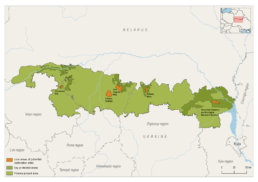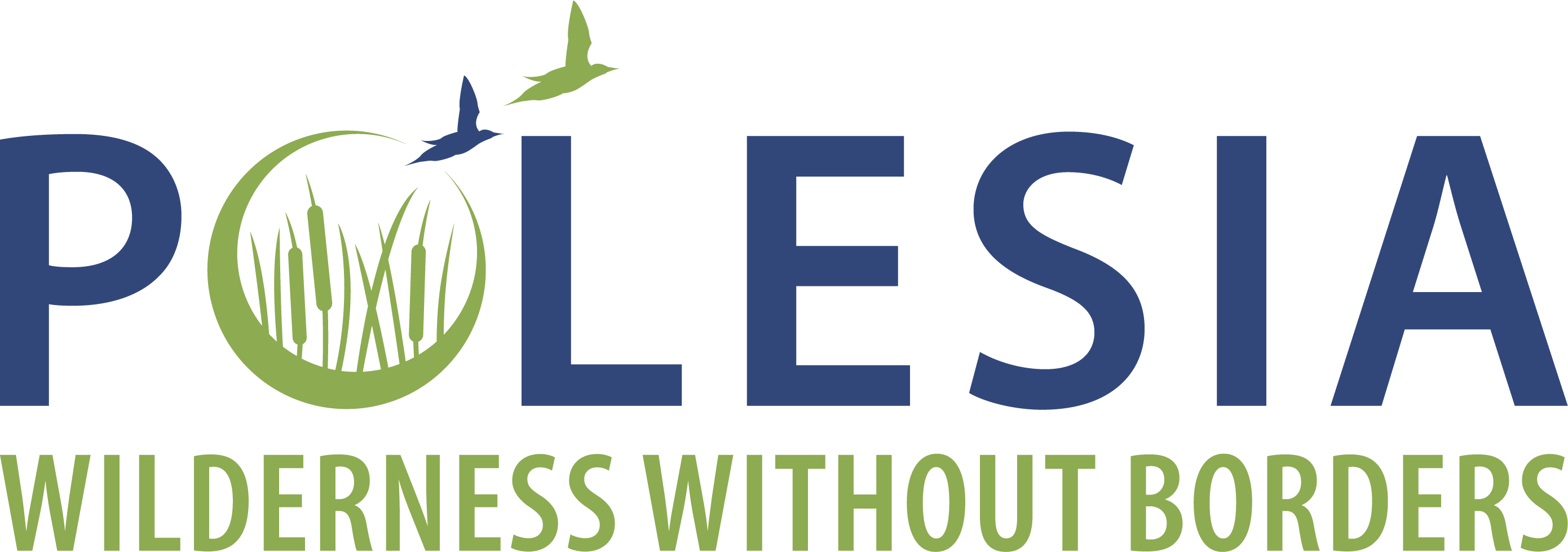Pushcha Radzivila National Park
This area is part of one of Europe’s largest transboundary forest and peat bog complexes – the Almany/Olmany Mires. It also includes a stretch of the Stvyha River valley, about 20 kilometers long. This section of the river is completely natural. Its marshy riverbed forms numerous oxbow lakes and side channels.
The landscape is dominated by forest and wetland ecosystems, interspersed with sandy dune complexes. The forests are primarily pine, with birch and black alder common in the boggy areas. The floodplain of the Stvyha River features rare floodplain oak forests. Unfortunately, some of the pine forests in drier areas have been affected by logging, especially near settlements.
The reserve is part of a unified protected system, bordering both the Almany Mires landscape reserve in Belarus and the Rivnenskyi Strict Nature Reserve in Ukraine.

Country: Ukraine
Area: 24,265.0 ha
National protection status: National Park
International protection status: Partly within Emerald Network (UA0000339) - Poznan-Blazhove.
457 species
of vascular plants are recorded in the area
20 key nabitats
habitats included in Resolution #4 of the Standing Committee to the Bern Convention are found here
>30 species
occurring here are nationally and internationally protected
Land cover

Forests

Open peatbogs

Others
Biodiversity and natural values

Habitats
The area is characterised by the diversity of forest and wetland habitats. More than 20 natural habitats requiring specific protection under the Resolution No. 4 of the Standing Committee to the Bern Convention have been identified here:
Aquatic Habitats
- Permanently dystrophic lakes, ponds and pools (3160) – Brown-water, acidic water bodies,
- Free-floating vegetation (e.g., Floating frogbit rafts, Floating water soldier rafts);
Wetland Habitats
- Transitional mires and quaking bogs (7140),
- Beds of large sedges (usually without free water);
Grassland Habitats
- Open non-Mediterranean dry acid and neutral grasslands, including inland dune grasslands (2330),
- Mat grass swards (6230) – Nutrient-poor acidic grasslands,
- Dry heaths (4030);
Woodland Habitats
- Sphagnum birch woods (91D0),
- Nemoral coniferous swamp woods (91D0).



Biodiversity
The flora of the area includes 457 species of vascular plants, of which at least 12 species are listed in the Red Data Book of Ukraine.
The flora and fauna of the area includes at least 30 species listed in Resolution 6 of the Standing Committee to the Bern Convention. The site is of particular importance for the conservation of such species as the Greater Spotted Eagle (Aquila clanga), the Hazel Grouse (Bonasa bonasia), the Short-toed Eagle (Circaetus gallicus), the Woodlark (Lullula arborea), the Three-toed Woodpecker (Picoides tridactylus), the Grey-headed Woodpecker (Picus canus), the Black Grouse (Tetrao tetrix tetrix), the Capercaillie (Tetrao urogallus), the White-backed Woodpecker (Dendrocopos leucotos), the Hen Harrier (Circus cyaneus), the Black Woodpecker (Dryocopus martius), the Collared Flycatcher (Ficedula albicollis), the Crane (Grus grus), the Little Bittern (Ixobrychus minutus), the Little Crake (Porzana parva), the Spotted Crake (Porzana porzana), the European Pond Turtle (Emys orbicularis), the Crested Newt (Triturus cristatus), the Fire-bellied Toad (Bombina bombina), the Capricorn Beetle (Cerambyx cerdo), the Eastern Pasqueflower (Pulsatilla patens), etc.
The following species are common in the area: the European Beaver (Castor fiber), the Lynx (Lynx lynx), the Otter (Lutra lutra), the Wolf (Canis lupus).
The most important impacts and threats

Logging, dead wood removal

Wildfires

Old drainage systems

Illegal mining, including amber
Protection and conservation needs
Zonation is established for the park with various limitations of economic activities, including the strict protection zone (with the total ban thereof) which occupies 32,1% of the area.
The recommended measures for making the conservation efforts in the area more efficient are:
- Compilation of a detailed inventory of natural values with subsequent handing them over under land-users’ protection;
- Spatial extension of the park;
- Systemic monitoring of the conservation values;
- Development of a management or conservation plan for the entire area.
Our activities in the area
The feasibility study for the creation of the Pushcha Radzivila National Park was prepared and submitted to the MoE of Ukraine as part of the project “Polesia – Wilderness Without Borders” coordinated by FZS.



The project “Polesia – Wilderness Without Borders” is part of the Endangered Landscapes & Seascapes Programme and is funded by Arcadia. The project is coordinated by Frankfurt Zoological Society (FZS).

